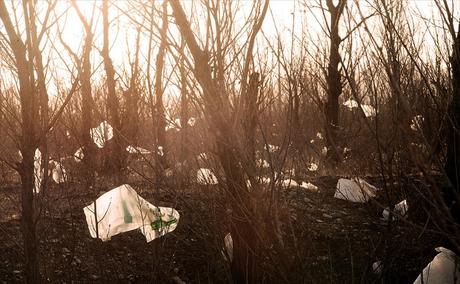The rapid increase in the consumption of single-use plastic is speeding up the climate change hazard, and it needs to be stopped immediately, a report warns.
Plastic contributes to the emissions of the greenhouse gas at every stage of its lifecycle starting from its production to its refining and managing it as a waste product, the report says. The fracking boom in the US has partly fueled plastic production, and it is expanding worldwide.

According to the research published on Thursday, plastic will be responsible for up to 13% of the total “carbon budget” – equivalent to 615 coal-fired power plants by 2050 which threatens the attempts to meet the Paris climate agreement.
The authors of the report by the Center for International Environmental Law say the greenhouse gas footprint of plastic from the cradle to the grave was estimated for the first time. The contribution of plastic production and disposal to climate change has been kept hidden so far, they added.
As the plastic pollution in the oceans has become a high-profile concern, the effect of the ubiquitous use of plastic on climate change remained out of focus.
“After the extraction of fossil fuels to produce plastic, the carbon footprint of a material which has become ubiquitous across the globe continues through the refining process, and on well past its useful life as a drinks bottle or plastic bag, through the way it is disposed of and the plastic afterlife,” the report says.
The disposable plastic found in packaging and fast-moving consumer goods have made the plastic economy the largest and fastest-growing segment, authors say.
They are calling for emergency action to reduce the production and flow of single-use plastic.
The key actions required as per the authors are:
- Stopping the production and use of single-use, disposable plastic immediately.
- Halting the development of new oil, gas, and petrochemical infrastructure.
- Fostering the transition to zero-waste communities.
- Implementing a system where polluters being the extended producer pay for the impact of their products as their responsibility.
“Plastic is one of the most ubiquitous materials in the economy and among the most pervasive and persistent pollutants on Earth,” say the authors. “It has become an inescapable part of the material world, flowing constantly through the human experience in everything from plastic bottles, bags, food packaging, and clothing to prosthetics, car parts, and construction materials.”
There is a boom in single-use plastic production from 2m tonnes in the 1950s to 380m tonnes in 2015 and 40% of the demand for plastic is due to throwaway plastic packaging. Around 8.3bn metric tonnes of plastic had been produced by the end of 2015, two-thirds of which released into the environment and stays there.
“Packaging is one of the most problematic types of plastic waste, as it is typically designed for single use, ubiquitous in trash, and extremely difficult to recycle. A constant increase in the use of flexible and multilayered packaging has been adding challenges to collection, separation, and recycling,” the researchers said.
Plastic packaging waste of around 40 percent is disposed of at sanitary landfills, 14 percent gets collected for recycling, and 14 percent makes its way to incineration facilities. Among the methods of plastic waste management, incineration causes the most CO2 emissions.
99% of the plastic that means nearly all plastic comes from fossil fuels.
In the lifecycle of plastic, refining the material which has significant expansions in the US and elsewhere is the most greenhouse gas intensive part, and will accelerate climate change, the report says.
A Shell ethane cracker in Pennsylvania could emit up to 2.25m tonnes of CO2 per year and a new ethylene plant at ExxonMobil’s refinery in Baytown, Texas, could release up to 1.4m tonnes. The report says the annual emissions from only these two new facilities would be equal to adding almost 800,000 cars to the road.
In 2019, from extraction to disposal, the lifecycle of global plastic production was equivalent to the impact of 189 500MW coal-fired power stations on the climate. The report predicts, by 2050, the plastic footprint globally will be equal to 615 coal plants operating at full capacity.
“Plastic is among the most significant and rapidly growing sources of industrial greenhouse gas emissions,” the report says. “Emissions from plastic emerge not only from the production and manufacture of plastic itself but from every stage in the plastic lifecycle – from the extraction and transport of the fossil fuels that are the primary feedstocks for plastic to refining and manufacturing, to waste management, to the plastic that enters the environment.”
Carroll Muffett, one of the authors, said: “It has long been clear that plastic threatens the global environment and puts human health at risk. This report demonstrates that plastic, like the rest of the fossil economy, is putting the climate at risk as well.”

